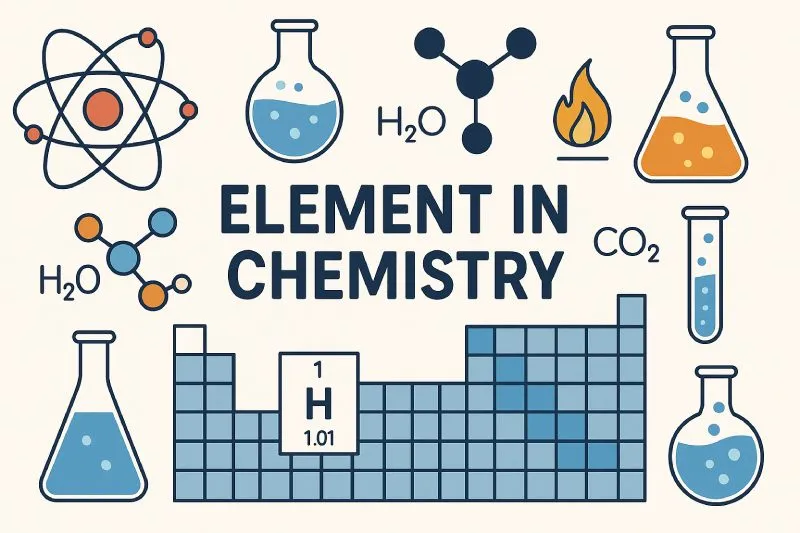The World of Elements
What Exactly is an Element?
Imagine you have a bar of pure gold. You can cut it, melt it, or even dissolve it in a special mixture of acids, but no matter what you do, you cannot use a chemical reaction to turn that gold into anything other than gold. This is the core idea behind an element. It is a substance made up of only one type of atom.
Every single object in the universe is made from combinations of these elements. The key is the atom. Each element has its own unique type of atom, defined by the number of protons in its nucleus, known as the atomic number[1]. For example, every atom of carbon has 6 protons, and every atom of oxygen has 8 protons. If you change the number of protons, you change the element.
The Periodic Table: A Map of the Elements
To make sense of all the known elements, scientists organized them into a chart called the Periodic Table of Elements. This table is not just a random list; it is a powerful tool that groups elements with similar properties together.
Elements are arranged in order of increasing atomic number, from left to right and top to bottom. The vertical columns are called groups[2] (or families), and the horizontal rows are called periods[3]. Elements in the same group often have very similar chemical properties. For instance, the elements in Group 1 (like lithium, sodium, and potassium) are all very soft, shiny metals that react violently with water.
| Group Name | Group Number | Key Elements | Common Properties |
|---|---|---|---|
| Alkali Metals | 1 | Lithium (Li), Sodium (Na) | Very reactive, soft, low density |
| Halogens | 17 | Fluorine (F), Chlorine (Cl) | Reactive non-metals, often form salts |
| Noble Gases | 18 | Helium (He), Neon (Ne) | Colorless, odorless, and very unreactive |
Metals, Nonmetals, and Metalloids
One of the most basic ways to classify elements is by dividing them into metals, nonmetals, and metalloids. This classification is based on their physical and chemical properties.
Metals, like iron (Fe), copper (Cu), and gold (Au), are typically shiny, good conductors of heat and electricity, and malleable (can be hammered into sheets). Most elements are metals. Nonmetals, like carbon (C), sulfur (S), and oxygen (O), are often dull in appearance, poor conductors, and brittle. Metalloids, such as silicon (Si) and germanium (Ge), have properties in between metals and nonmetals and are semiconductors, making them essential for electronics.
Elements in Action: From Air to Technology
Elements are not just abstract concepts in a textbook; they are part of our everyday lives. The air we breathe is primarily a mixture of two elements: nitrogen gas (N_2) and oxygen gas (O_2). The table salt we use to flavor our food is a compound made from the metal sodium (Na) and the nonmetal chlorine (Cl), forming sodium chloride (NaCl).
Modern technology relies heavily on specific elements. The computer or phone you are using right now contains a multitude of elements. The microchips are based on the metalloid silicon. The screen might use indium (In) and tin (Sn) in the form of indium tin oxide for its transparent conductive properties. The batteries likely contain lithium (Li), and the wiring uses copper (Cu).
Common Mistakes and Important Questions
Q: Is water an element?
Q: Can elements be created or destroyed?
Q: What is the difference between an atom and an element?
Footnote
[1] Atomic Number (Z): The number of protons in the nucleus of an atom. This number uniquely identifies a chemical element.
[2] Group: A vertical column on the Periodic Table. Elements in the same group typically have the same number of valence electrons and thus similar chemical properties.
[3] Period: A horizontal row on the Periodic Table. Elements in the same period have the same number of electron shells.
[4] Compound: A substance formed when two or more different chemical elements are chemically bonded together.

